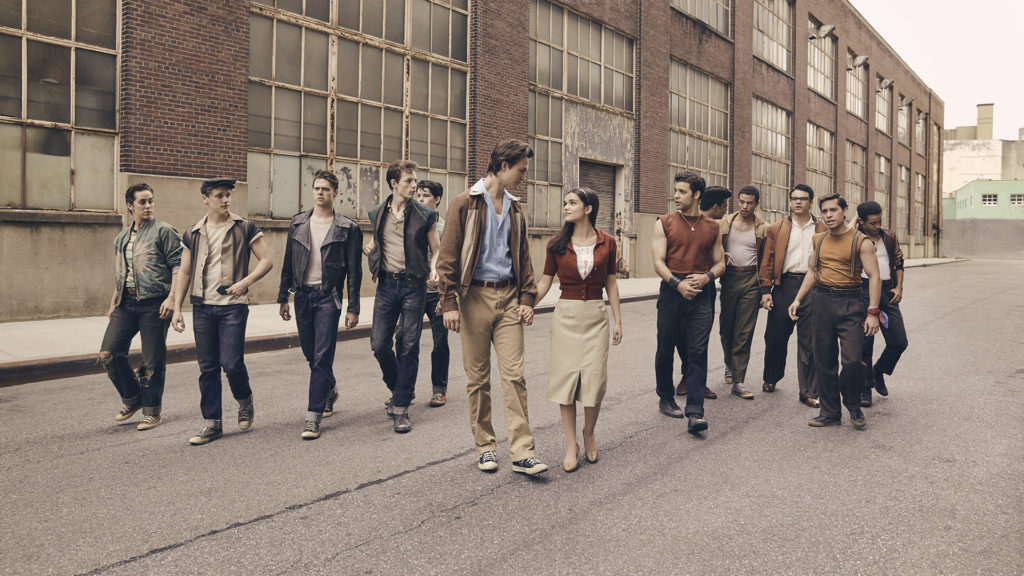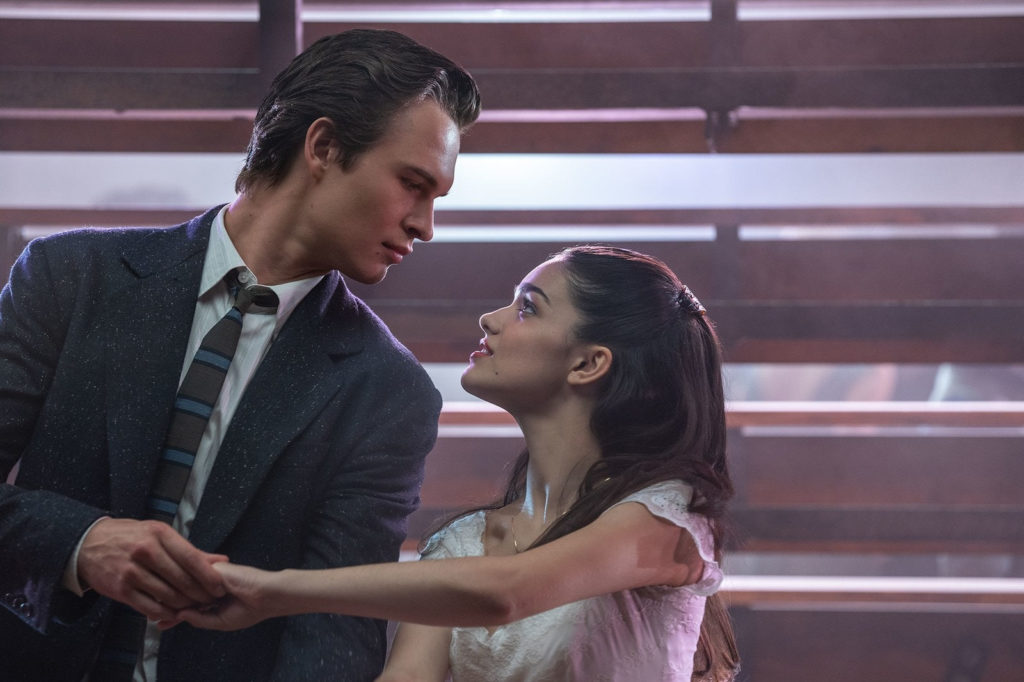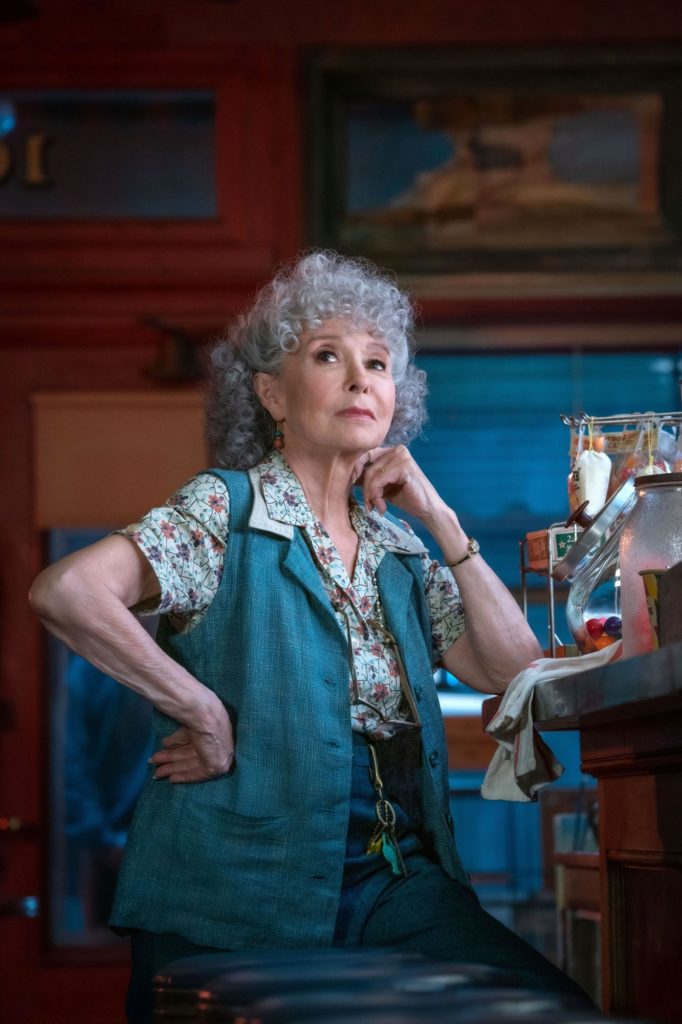Reviews include Irena’s Vow, The Beast, and Before I Change My Mind.
It’s Tony Kushner who makes the West Side Story remake a triumph
December 10, 2021

By Susan G. Cole
Why bother to remake West Side Story?
The opportunity to cast Latinx performers as Puerto Ricans is reason enough to have another crack at the musical about rival street gangs and doomed love. And it does make a huge difference in the new version directed by Steven Spielberg, especially in the role of Maria, played in the 1961 movie by Natalie Wood (a white movie star with a bad accent, whose vocals had to be dubbed), now taken on by the incandescent newcomer Rachel Zegler.
However, with Jerome Robbins’ choreography almost entirely erased and replaced by dance sequences by Justin Peck – the Sharks versus Jets sequences are more fight than dance – the star of the show remains composer Leonard Bernstein. The star of the remake? Screenplay writer Tony Kushner.
Why bother? Bernstein’s score is perfect and Robbins’ original choreography spectacular, but the Arthur Laurents’ stage script, based on Shakespeare’s Romeo and Juliet, was actually quite weak. In large measure that’s because, in its original form, the work was overwhelmed by the genius of Bernstein and Robbins. West Side Story was conceived by Bernstein as an opera and when it became a musical, he wrote even more music for Robbins. Laurents was in on it early, but by the time West Side Story opened on Broadway in 1957, the book had shrunk dramatically. The discrepancy in the size of the music and the script is much greater than that of any other musical. Usually, they’re almost the same size with the book being slightly shorter. West Side Story’s score? Two inches thick. The book? Just over half an inch. So Laurents didn’t get much content into the show and what dialogue exists is clunky. Ernest Lehmann didn’t add much to it in his screenplay for Robert Wise and Jerome Robbins’ 1961 movie.

Enter Tony Kushner, Spielberg’s choice to pen the script for his remake. Kushner, an out queer writer, gets in his guts oppression, marginalization and the complexities of New York’s inner-city life. This last element factors into the first images of West Side Story 2021, where the city’s old run-down buildings are being demolished so that New York looks like a war zone. An early lengthy speech by police lieutenant Schrank (Corey Stoll) warns the rival gangs that it doesn’t matter who wins or loses their turf battles: they’ll be out of their soon-to be gentrified neighbourhoods altogether before they know it.
In the original book, there was no room for backstory. This time around, and because Kushner cares about character development, we find out more about Tony (Ansel Elgort). For example, he’s on parole after a prison stint for nearly murdering a rival gang member and now determined to turn his life around. Riff (Mike Faist) emerges as a perennial, dangerous bad boy, a smirking powder keg and not very likable. Compared to the cutesy Russ Tamblyn in the original movie, he’s fully formed.

Kushner gives the owner of Doc’s store, now played by Rita Moreno, her own deep experience of fractured race relations: she married a white man and paid the price for it. That detail gives good reason for her to perform one of the musical’s most famous songs, “Somewhere,” performed by Maria in the original musical and 1961 film. And Chino (Josh Andrés Rivera) comes across as more than just a cipher to advance the narrative’s climactic plot point. He’s a man deeply conflicted about what it means to be a proud Puerto Rican. Is he a bland accounting student with a boring future or a tough guy with bigger purpose?
In Kushner’s hands, the two rival gangs come from vastly different cultures. The Puerto Ricans – now often speaking in Spanish (without subtitles, a smart choice) – endure unabated racism, but they’ve built up their community, maintain strong family ties. and live in small but decent apartments—even if the fire escape outside Maria’s provides no escape at all. And they work hard, Anita (Ariana DeBose) as a seamstress who aspires to opening her own shop and Bernardo (David Alvarez) as a professional boxer.
The Jets, on the other hand, show no propensity for hard work and might as well be homeless. They come from broken families and their early shoplifting is now eclipsed by their constant and nasty harassment of Puerto Rican businesses. Wholly alienated, they are fueled by rage. That may be as much of a stereotype as the stereotypes of Puerto Ricans in the original work, but it lends some logic to the piece’s primary conflict: the Puerto Ricans are getting somewhere, but the poverty-stricken white guys, not so much.
But it’s Kushner, the queer man with an affinity for gender complexities, who shows his brightest colours. This time around, Anybodys, in the original a Tomboy desperately seeking membership in the Jets, is a full on trans man and says as much. (Non-binary actor Iris Menas plays Anybodys in the new film.) Note that Stephen Sondheim’s lyrics remain untouched. And so, in the song “Officer Krupke,” the line “My sister wears a moustache/ My brother wears a dress/Goodness gracious, that’s why I’m a mess,” stands. In 1957, when the Broadway show first opened, those attitudes were the norm and the lyric got a laugh. Conscious audiences are more likely to wince now.
Kushner, on the other hand, can’t resist the urge to modernize. In a brilliant stroke, he rewrites the penultimate scene so that the Jets lock their girlfriends outside Valentina’s store, leaving them to scream their fury as the boys attack Anita. In the #MeToo age, it just has to be that way.
And Kushner knows it.



